3 Takeaways from 2019 Championship Sites
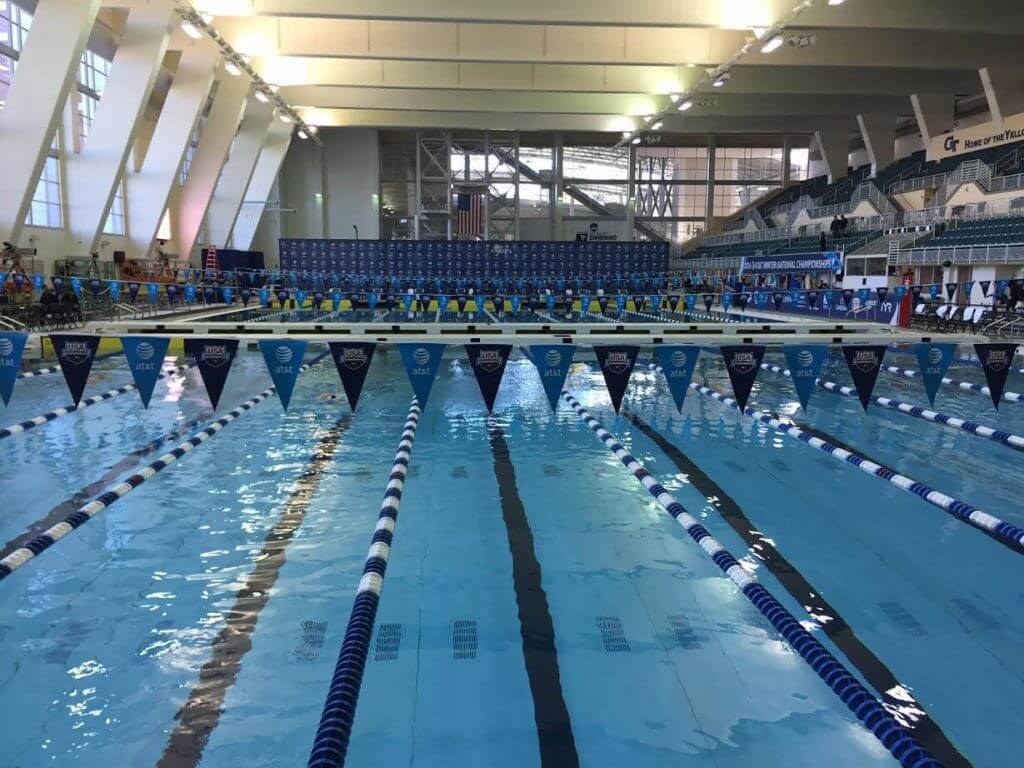
By Ryan Gibbons, Swimming World College Intern.
Last month at the United States Aquatic Sports Convention in Jacksonville, Fla., the USA Swimming Board of Directors unveiled additional championship meet sites for the 2019 Championship Series (Futures, Junior Nationals, TYR Pro Series, Nationals, and Open Water Nationals/Junior Nationals). While a few of selected locations are familiar sites, many new choices by the Board reflect a number of changes and progressions in the sport.
After a re-release of the Futures Championship locations (after a conflict between the rule book and the Senior Development Committee’s meetings changed the dates to be a week earlier), all of the meet locations (except for an undetermined Pro Series site) have been finalized:
- January 9-12: TYR Pro Swim Series – Knoxville, Tenn. (University of Tennessee)
- March 6-9: TYR Pro Swim Series – Des Moines, Iowa (MidAmerican Energy Aquatic Center, Wellmark YMCA)
- April 10-13: TYR Pro Swim Series – Richmond, Va. (Collegiate School Aquatics Center)
- May 3-5: Open Water National/Junior National Championships: Biscayne Bay, Fla. (Miami Marine Stadium)
- May 17-19: TYR Pro Swim Series – Bloomington, Ind. (University of Indiana)
- June 12-15: TYR Pro Swim Series – TBD
- July 31 – August 4: Summer National Championships – Palo Alto, Calif. (Stanford University)
- August 1-4: Futures Championships:
- Gresham, OR (Mt. Hood Community College)
- Des Moines, IA (Mid-American Energy Aquatic Center – Wellmark YMCA)
- Geneva, OH (Spire Institute)
- Greensboro, NC (Greensboro Aquatics Center)
- August 6-10: Summer Junior National Championships – Palo Alto, CA (Stanford University)
- December 4-7: Winter National Championships – Atlanta, Ga. (Georgia Tech)
- December 11-14: Winter Junior National Championships:
- EAST – Atlanta, Ga. (Georgia Tech)
- WEST – Federal Way, Wash. (Weyerhaueser King County Aquatics Center)
Sites such as Atlanta, Ga., and Greensboro, N.C., are familiar, having hosted a wide range of national meets in recent years. However, a number of new pools are making appearances, and many pools have been awarded previously lower-level meets – indicative of a number of changes in the swimming industry and in the sport itself.
USA Swimming’s selections provide three major takeaways surrounding their visions and perspectives of the sport and represent a constantly changing aquatics community.
1. Commercialization of the Sport
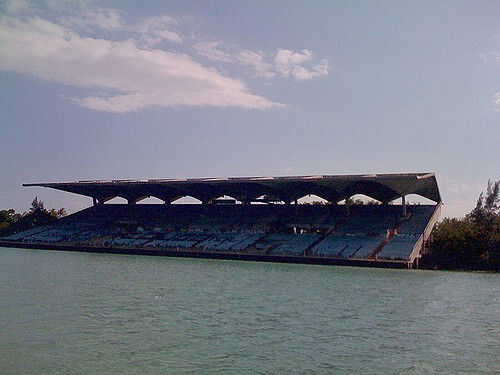
Photo Courtesy: Ines Hegedus-Garcia
A major theme demonstrated by these selections is the growth and commercialization of the sport, particularly at the highest levels of the sport. With the Summer National Championships and Summer Junior Nationals returning to Palo Alto, Calif. – just one year after both were hosted in Irvine, Calif. – these meets remain in classy and popular (albeit expensive) areas. Doing so provides numerous benefits to the sport, namely in terms of branding: holding a televised meet in a famous, widely-known location provides an aspect of added legitimacy to the sport, bringing considerably more sponsorship and viewership than meets hosted in obscure locations.
Yet, while this continuation of California National Championships is certainly notable, even more distinctive is the awarding of the Open Water Championships to Miami Marine Stadium on Biscayne Bay in South Florida. While a Miami-hosted championship meet provides the aforementioned flash of holding meets in tourist-heavy and classy locations, holding such a meet in a recently-renovated stadium seating 6,500 is a significant change from hosting the meet at a beach or park in Castiac Lake, Calif., or Miramar Lakes, Fla. Doing so not only allows for greater spectator viewing of the event but also provides the possibility of greater sponsorship opportunities – and possibly even the future televising of the event.
2. Growth of the Futures Championships
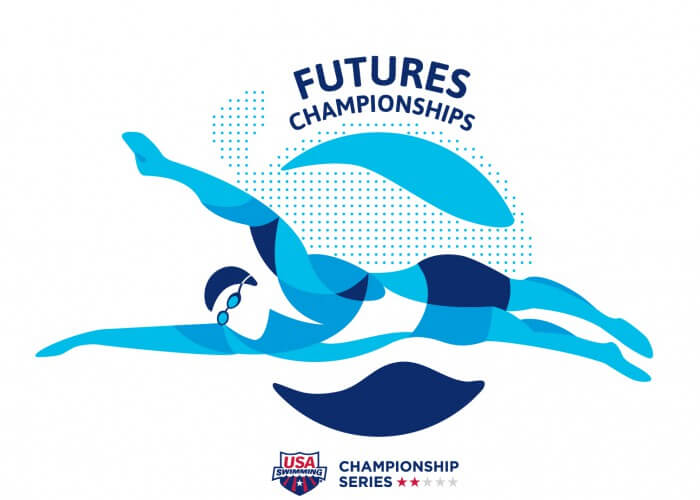
Photo Courtesy: USA Swimming
Among the most major themes reflected by the schedule is the awarding of the Futures Championships to large facilities previously reserved for upper-level meets. As the Futures meets have grown both in size and speed since their 2015 introduction, the locations have generally progressively grown in size and status. This year features a series of renowned locations, many of which have hosted large and elite events for years.
This general promotion of sites for the Futures meets reflect this growth, providing faster and larger facilities to the vast number of competitors at the meets. All four locations are capable of comfortably holding meets of national-level size and provide an additional level of status to the relatively young meet.
3. Questioning of the Pro Series Meets
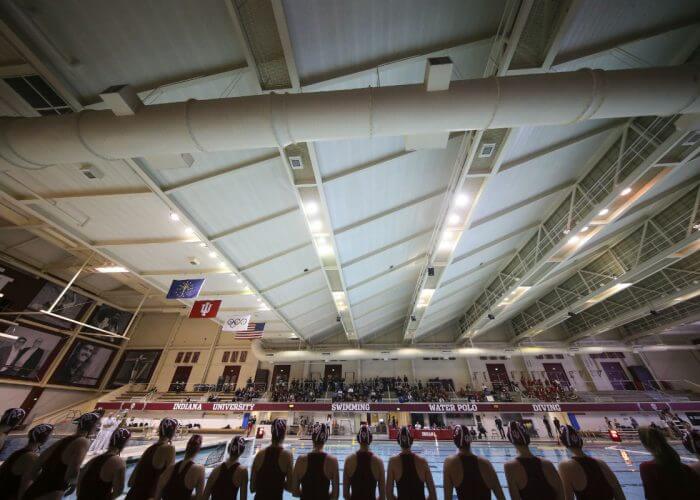
Photo Courtesy: Indiana Athletics
USA Swimming’s prestigious TYR Pro Series events, long known for their intense marketing and sponsorship, have previously been selected by offering incentives to organizations willing to host them. This year, however, USA Swimming accepted bids to host the meets, accompanied by a $10,000 fee to host. While the sites remain large and suitable facilities, the effectiveness of this new strategy is yet to be determined.
While USA Swimming maintains its financial emphasis on the Pro Series, stating that having the event “be financially successful for all parties” is a main goal (emphasizing likely significant financial return to host sites), the new process appears to have resulted in the meets being awarded to less prestigious facilities than in previous years. Sites such as the Collegiate Aquatics Center in Richmond, Va. and Indiana University in Bloomington, Ind. – while still adequate to hold upper-level competitions – aren’t quite as large or prestigious as previous sites, such as the IUPUI Natatorium in Indianapolis, Ind. and the George F. Haines International Aquatics Center in Santa Clara, Calif.
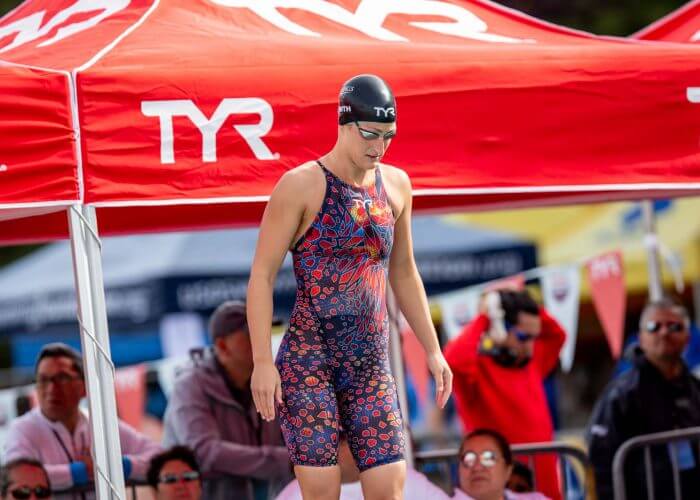
Photo Courtesy: Becca Wyant
That is not to say that the meets will not be incredibly fast nor the locations inadequate. Utilizing a bid process will likely be effective for the long-term success of the sport and the Pro Series. However, removing financial incentives and implementing bid applications will inevitably have the short-term effect of promoting smaller and less prestigious facilities to hold the meets. Ultimately, these meets will be just as fast (if not faster) than they have previously been and will progressively grow to encompass larger facilities.
These new locations are not the only – or most significant – indication of the momentum of the sport, primarily in its commercial and growth aspects. However, they provide great insight into the direction that USA Swimming has chosen to push and will likely prove to be a highly effective slate of championship sites.
All commentaries are the opinion of the author and do not necessarily reflect the views of Swimming World Magazine nor its staff.




I also wondered if the bidding process this year is going to backfire for USA Swimming and the Pro Series. I have to imagine that it might lead to a resurgence in events like the Charlotte UltraSwim, the Irvine Nova Grand Challenge, and the Mission Viejo Swim Meet of Champions. These events have become more local in the last few years. But, alongside Santa Clara who likely will still host their flagship meet, might see more interest this year from top swimmers who choose to go to these events in major cities rather than the Pro Series.